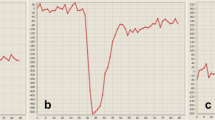Abstract
Gadolinium contrast agents for magnetic resonance (MR) imaging of the central nervous system (CNS) are used to improve detection and characterization of lesions. These agents are mandatory for accurate diagnosis of CNS lesions and for effective preand postoperative evaluation of patients with CNS disease. Of the contrast agents approved worldwide for MR imaging of the CNS, gadobenate dimeglumine (Gd-BOPTA, MultiHance, Bracco Imaging, Milan, Italy; Bracco Diagnostics, Princeton, N.J.) is unique in possessing a twofold higher T1 relaxation rate (R1). Several studies have shown that this increased relaxivity translates into greater signal intensity enhancement and, in consequence, improved lesion visualization compared to that achieved with other commonly used gadolinium contrast agents. This review summarizes the principal findings of several intraindividual crossover studies performed to compare the signal intensity enhancement achieved with Gd-BOPTA with that achieved after administration of conventional contrast agents. The benefits of the increased relaxivity of Gd-BOPTA for pre- and postoperative planning are discussed.
Similar content being viewed by others
Author information
Authors and Affiliations
Corresponding author
Rights and permissions
About this article
Cite this article
Maravilla, K.R. Gadobenate dimeglumine-enhanced MR imaging of patients with CNS diseases. Eur Radiol Suppl 16 (Suppl 7), M8–M15 (2006). https://doi.org/10.1007/s10406-006-0191-4
Issue Date:
DOI: https://doi.org/10.1007/s10406-006-0191-4




